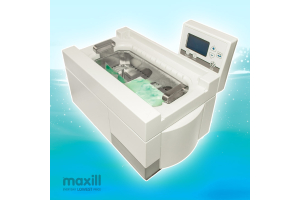Why Do Dentists Use Dental Dams?

Dentists use dental dams as a barrier to isolate specific teeth during certain dental procedures.
The dental dam acts as a barrier to prevent blood and saliva from contaminating the isolated area. This helps with visibility, and access for the dentist and assistant, allowing them to keep a clean dry working field.
Dental dams are commonly used during procedures such as fillings and root canals, and by using a dental dam, dentists can ensure a more efficient and effective dental procedure and promote patient comfort and safety.
What Are The Benefits Of Using A Dental Dam In Dentistry?
Infection Control: Dental dams act as a barrier, preventing the spread of saliva and oral bacteria between the patient's mouth and the treated area, reducing the risk of cross-contamination and infection.
Isolation: They isolate the tooth or teeth being worked on, providing a clear working field for the dentist by keeping the surrounding area dry and visible.
Protection: Dental dams shield soft tissues like gums, cheeks, and tongue from accidental contact with dental instruments, minimizing potential injuries during procedures.
Enhanced Visibility: By isolating the tooth, dental dams enhance visibility, allowing better access and precise treatment, especially during procedures like root canals and fillings.
Patient Comfort: They can improve patient comfort by preventing the accumulation of excess saliva and debris in the mouth during treatments, reducing the need for frequent interruptions.
Chemical Protection: Dental dams can protect the soft tissues from any chemicals or materials used during dental procedures, ensuring these substances don’t come into contact with other parts of the mouth such as their oral mucosa.
Preventive Measure: Using dental dams can help prevent the inhalation or ingestion of small dental materials or instruments by the patient.
Efficiency: They facilitate a more efficient dental procedure by aiding in moisture control and maintaining a clean, dry area for the dentist to work on.
Safety: Dental dams are a safety measure for both the patient and the dental practitioner, reducing the risk of accidental injury or exposure to infectious agents.
Patient Education: They serve as a visual aid, allowing dentists to demonstrate specific dental procedures to patients by isolating the treated area.
These benefits collectively contribute to maintaining a safer, more controlled, and efficient dental practice.
What Are Some Challenges Of Using A Dental Dam In Dentistry?
While dental dams have several benefits in dentistry, there are also some disadvantages associated with their use:
- Placing a dental dam can be challenging and requires proper technique and training.
- It can also take some time to get the dam into the correct position.
- Some patients may experience discomfort when the dental dam is placed. In most cases the patient's mouth will be frozen, but some pressure can be felt during initial placement of the dam.
- The dam can also cause gagging for those with sensitive reflexes.
- Some patients may have an allergy to latex, which is a common material used to make dental dams. Be sure your patients medical is up to date with all allergies to avoid any complications.
In the event of a latex allergy, alternative materials such as nitrile or polyisoprene dental dams can be used.
Now let's answer some common questions surrounding the use of Dental Dams in Dentistry.
Is A Dental Dam Necessary During Root Canal Procedures?
A dental dam may not be necessary for every procedure, but it is highly recommended for root canal treatment!
Root canal treatments involve the use of materials, irrigants and contaminants that should not be ingested by your patient. A properly placed dental dam ensures that your patient does not taste, or swallow anything during the procedure.
The dental dam is important for maintaining a sterile environment for the tooth in addition to preventing water, debris, and even cleaning tools or anything else from going down your patients throat.
Do Dental Dams Hurt?
The placement of a dental dam or rubber dam should not cause significant discomfort or pain as the patient is usually anesthetized during the procedure. Your patient however may feel some noticeable pressure when the dental dam clamp is being placed over the tooth to hold the dam in place. If placed correctly there should be no pain or pinching.
Dental dams are made from soft flexible materials such as latex, neoprene, or polyisoprene, and can come in different scents for patient comfort.
When applied correctly using the proper clamps for your specific use, dental dams are a great tool to use in dentistry. Not only to protect your patient but increase productivity for the dentist. With a rubber dam, the working field remains dry and isolated, reducing the need for cotton isolation, and reducing the risk for saliva contamination that could lead to treatment failure.
What Are The Different Components Of Dental Dam Equipment?
The components of dental dam equipment typically include the following:
Dental dam: The dental dam, also known as a rubber dam, is the key component of the equipment and is used to isolate the tooth or area being worked on during a dental procedure.
Dam clamps: Dam clamps are used to secure the dental dam in place during a dental procedure. They are designed to clamp onto the tooth, holding the dam securely in place.
Dental dam frame:The dam frame is used to hold the dental dam during the procedure, allowing an open field view of the area to be treated. Dam frames can be made of plastic, or metal, and some dams even have frames build in.
Dental dam punches:A dental dam punch is a tool used to create holes in the dental dam to easily place the dam over the tooth or teeth being worked on.
Dental Dam Forcep: The dam forcep is a tool designed to easily pick up and place the dental dam clamp over the tooth safely and with ease.
These are the basic components of dental dam equipment, and the specific components used will depend on the type of procedure being performed and the preferences of the dentist.
What Is A Dental Dam Made Of?
Dental dams are typically made from latex or latex-free materials.
Latex dental dams are made from natural rubber latex and for many years were the most common type of dental dam used in dentistry.
Latex-free dental dams are made from synthetic materials such as nitrile, neoprene, or polyisoprene.
With advancements in dental dam materials have notably addressed concerns regarding latex allergies while enhancing overall patient experience. Non-latex alternatives like polyisoprene and nitrile have emerged, providing viable options for those allergic to latex. These materials offer improved flexibility, thinner designs, and customizable sizes and shapes, catering to diverse patient needs.
In addition, flavored variations aim to enhance comfort during procedures. Biodegradable options contribute to environmental sustainability, and ongoing research is focused on developing allergen-free materials to minimize reactions in sensitive patients.
Combination of innovative application methods, improved retention mechanisms, and the exploration of new materials reflect the evolution of dental dams, ensuring increased comfort, safety, and efficacy in dental practices.
Conclusion
In summary, dental dams act as crucial barriers in dentistry, isolating specific teeth during procedures like fillings and root canals. They prevent contamination, enhancing visibility, access, and safety for both dentists and patients.
Despite their benefits, challenges can present themselves, including potential discomfort, placement difficulties, and allergic reactions in some patients.
However, advancements in materials and technology, including non-latex alternatives and improved designs, strive to overcome these challenges, promising increased efficiency, patient comfort, and safety in dental practices.
References
- Imbery, T.A., C.K.J.C. Carrico, and e.d. research, Dental dam utilization by dentists in an intramural faculty practice. 2019. 5(4): p. 365-376.
- Terauchi, Y., L.K. Bakland, and G.J.J.o.E. Bogen, Combined root canal therapies in multirooted teeth with pulpal disease. 2021. 47(1): p. 44-51.
- Critchley, E. and M.N.J.H. Pemberton, Latex and synthetic rubber glove usage in UK general dental practice: changing trends. 2020. 6(5): p. e03889.





